When we talk about dinosaurs, the conversation usually pertains to the field of paleontology. Paleontology is the study of the fossilized remains these ancient creatures have left behind. But what about archaeology, the study of artifacts and other physical remains people left behind? The walls of the Ta Prohm Temple in Cambodia display bas-relief carvings of a variety of different animals. One of them appears to be a strange creature with triangular objects running along its back. Could this be evidence of a stegosaur that lived in southeast Asia just a few hundred years ago?
The following article is a summary of “Is the Cambodian Stegosaur-like Carving Another Argument Creationists Should Not Use?” by Joshua Cedar, and of the surrounding discussion and research pertaining to it. The views expressed do not necessarily reflect those of New Creation.
Ta Prohm Temple
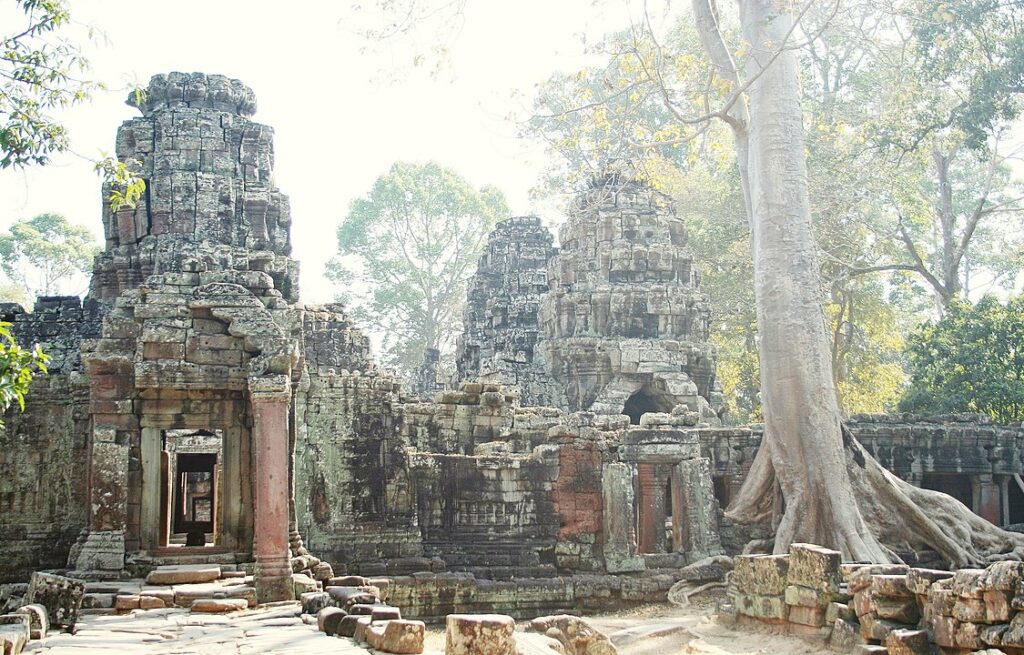
The ancient Khmer Empire dominated much of Southeast Asia (now Cambodia) between the 9th and 15th centuries. Ta Prohm was one of the many temples built during this time (late 12th/early 13th century). While the jungle covered up most Khmer Empire temples after the empire fell, Ta Prohm has remained more or less in its original condition. This has made it a popular tourist destination.
The walls of this temple display bas-relief carvings of people and animals. Some of the animals are easily recognizable, like water buffalo and swans. There is one, however, that has caused considerable debate. This particular carving represents a four-legged animal with a large beaked head, a downward-dropping tail, and triangular structures running along its back. Could this be a late-surviving member of the stegosaur family?
Dead Clade Walking
This would not be the first example of a type of animal living long past its alleged extinction date. In fact, paleontologists have a name for this phenomenon: dead clade walking. Paleontologist David Jablonksi coined the term in 2001 as a nod to the film Dead Man Walking. The title itself refers to a prisoner’s final walk to the execution chamber. Meanwhile, a “clade” is a group of organisms thought to have come from a common ancestor.
So the term “dead clade walking”1 refers to organisms that survive a major extinction event but fail to reclaim the diversity or numbers they held before. Some extinction survivors eventually die out, while others continue living into the present day. The coelacanth is perhaps the most famous example. Fossil discoveries have revealed they were much more common, widespread, and diverse in form compared to the single species alive today. Is the mysterious carving in Ta Prohm an example of a dead clade walking stegosaur?
Is the Excitement Warranted?
As you might expect, the alleged stegosaur carving has excited many young-earth creationists and cryptozoologists for decades. Even today, many people use it as evidence that dinosaurs lived alongside humans in the recent past. This, some have argued, fits the young-earth creationist worldview. Wouldn’t the discovery of a late-surviving dinosaur be easier to explain if dinosaurs lived thousands, and not millions, of years ago? Old-earthers have been less enthusiastic. They argue that the carving is some other animal known from the region today. Though, of course, they debate which animal it might be.
Is the Cambodian Carving a Stegosaur?
Creation researcher Joshua Cedar decided to get to the bottom of this. In due time, he published his findings in the Answers Research Journal in 2017. Cedar’s goal was to determine whether the features of the Cambodian carving match that of a stegosaur known from the fossil record. This is a good exercise in young-earth history model building. As biblical creationists, we are accountable to God for what we teach and how carefully we handle His Word (James 3:1). We should always apply and challenge ourselves as we strive to better understand God’s Word and the world He created.
This approach has been fruitful in the past. Making sure we properly understand scientific and biblical data has helped us avoid bad arguments (e.g. Vapor Canopy Model).2 It has also helped strengthen our case for young-earth creationism as a whole (e.g. Brand’s research on the Coconino Sandstone). We should strive to only use the best lines of evidence as we attempt to argue for the accuracy and authority of Scripture.
What is a Stegosaur?
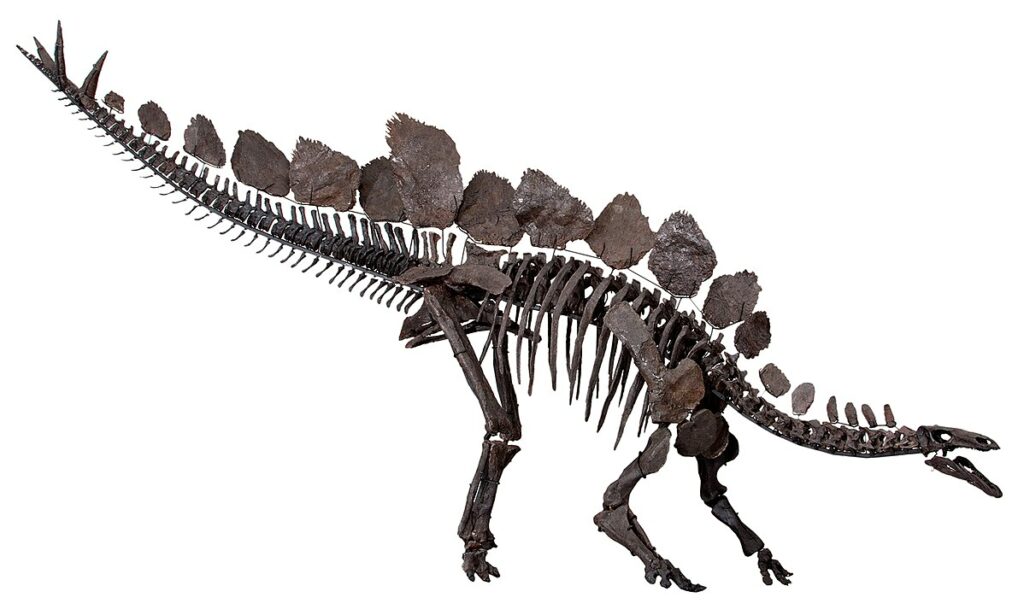
When most people hear the word “stegosaur,” they are thinking about Stegosaurus itself. Even though Stegosaurus was scientifically described in 1887, most skeletons found have been very incomplete or poorly preserved. This changed with the discovery of an 85% complete specimen named “Sophie” in 2003. An entire decade passed before her remains were scientifically described and we got a better idea of what this animal looked like.3
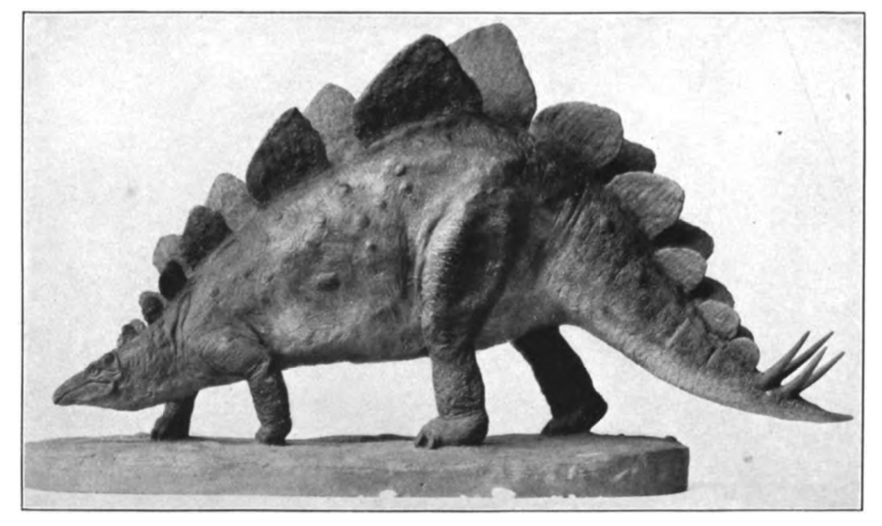
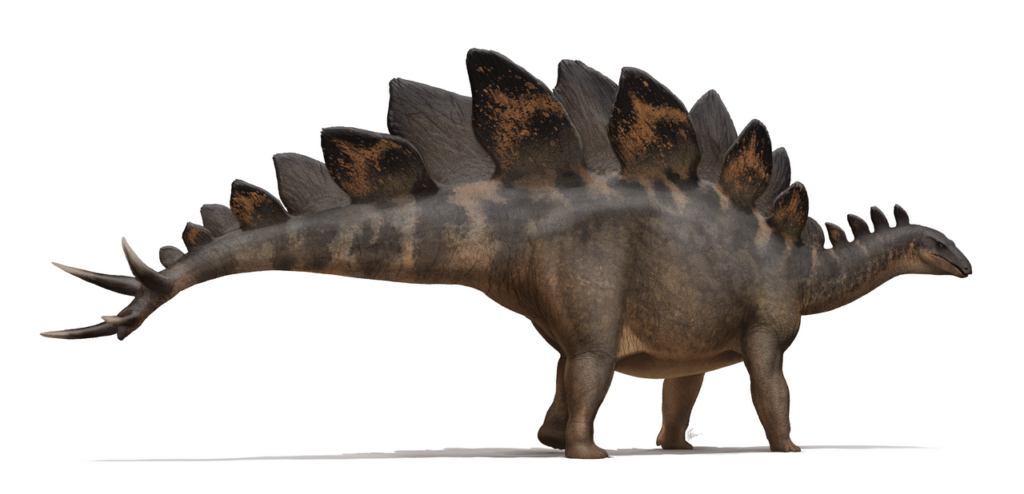
Up to 30 feet long and weighing four tons, Stegosaurus was a large, plant-eating dinosaur. Seventeen diamond-shaped plates ran along its neck, back, and tail in an alternating pattern. The tail, held parallel to the ground, had a four-spiked defensive weapon on the end called a thagomizer. Stegosaurus had a very small head compared to its body size. Sophie’s skeleton shows us that this animal was considerably more lanky than previously thought. Old depictions portrayed Stegosaurus with a hunched back and a short, stubby neck. Now we understand that this creature’s back was more lined up with its tail and it had a relatively long neck.
Stegosaurus is not the only member of its family, as these animals were actually quite diverse. Huayangosaurus and Tuojiangosaurus had more triangularly-shaped plates. Meanwhile, Kentrosaurus and Chungkingosaurus had a combination of plates and bony spikes on their backs.
Matching the Cambodian carving to a specific stegosaur might prove difficult given that we do not know what these animals looked like complete with skin and muscle. Therefore, we will simply try to compare it with a generic stegosaur.
What Specific Stegosaur Traits Does the Cambodian Carving Possess?

The carving has three main features, which many feel distinguish it as a stegosaur.4 These are the triangular structures running down its back, the arched back itself, and its legs that are positioned directly underneath its body. Many animals have their legs positioned in this manner, so we will ignore this criterion.
Skeptics have made the argument that the “plates” are really just decorative leaves of a plant behind the animal, as seen in many of the other carvings.5 In response, some creationists have pointed out that the structures along the carving’s back are of higher relief than those seen in other animals, such as the water buffalo.6,7 They also argue that the structures closely follow the line of the mystery animal’s back and tail. While Cedar appreciates these observations, he finds this distinction equivocal, arguing that the background decorations of the Ta Prohm carvings vary in size, shape and levels of detail.
Regarding the arched nature of the animal’s back, this is unlike that seen in stegosaurs. Recall that it was once thought that Stegosaurus had an arched back. This was odd, as it placed it in contrast to other stegosaurs. However, Sophie’s skeleton revealed that its back was more like those of its relatives.8
In summary, Cedar argues that arguments for the Cambodia carving’s identification as a stegosaur are disputable at best.
Is the Cambodian Carving Missing Specific Stegosaur Traits?
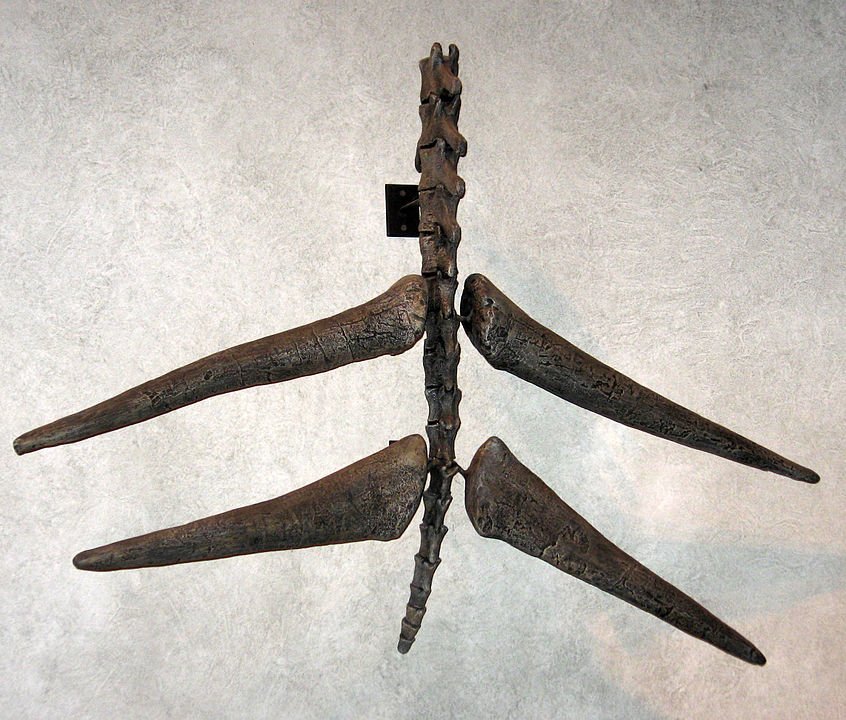
Aside from their plates, the most distinctive features of a stegosaur is the thagomizer. The Cambodian carving is missing this important characteristic. Is it possible that this was a variable feature in stegosaur populations, rather like how only some African elephants have tusks?
While that may be the case, Cedar notes that this point could just as easily be used to argue against the stegosaur interpretation. Since all well-preserved fossil stegosaurs have a thagomizer, and some species (e.g. Kentrosaurus) had a combination of plates and spikes on their backs, why does this alleged “stegosaur” depiction lack this important trait? Cedar thinks that this is another argument against the Cambodian carving being a stegosaur.
Does the Cambodian Carving Have Traits Not Found in Stegosaurs?
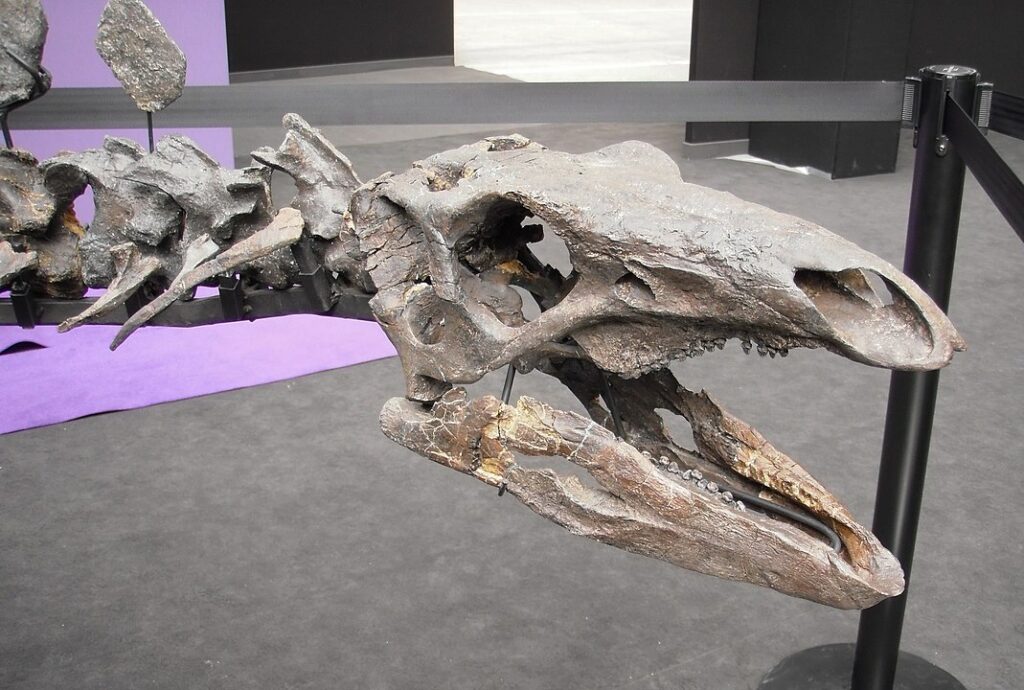
Not only does the mystery animal displayed in the Cambodian temple have a very large head, but it also has two pointed protrusions on its head. It is difficult to tell whether these are ears or horns.
The Cambodian carving seems inconsistent with stegosaurs from the fossil record in that the latter all have very small heads and long necks. And while many dinosaurs did have horns on their heads, stegosaurs are not among them. Additionally, external ears are not known on any reptile (including dinosaurs for which we have mummified remains of their heads), so there is no evidence that they occur in stegosaurs.
Likely Not a Stegosaur
Based on the evidence described above, Cedar concludes that the mystery animal at Ta Prohm Temple is likely not a depiction of a late-surviving stegosaur. As stated previously, there is disagreement as to its true identity. The potential suggested candidates include boar, rhinoceros, and chameleon. Cedar makes no attempt to identify Ta Prohm’s mystery animal but leaves this task to the work of future researchers.
Cedar recommends that creationists should not use the Cambodian “stegosaur” as evidence that dinosaurs lived recently.
Do Creationists Even Need a Dead Clade Walking Stegosaur?
The validity (or lack thereof) of the Cambodian “stegosaur” carving has little bearing on young-earth creationism as a whole. There are many better lines of evidence that dinosaurs lived thousands, rather than millions, of years ago, such as the discovery of original organic material in dinosaur bones. When trying to argue for a particular conclusion it is better to use many lines of evidence rather than to put all of our hopes into just one. More importantly, the foundation of our belief in creation shouldn’t be in the scientific evidence itself.
Science cannot give us provable conclusions. It does not have this ability. All science can do is help us take observations from the world around us and formulate testable hypotheses from which we derive conclusions. Science is inhibited by our own human limitations. We cannot know everything about the universe, so it is impossible for us to test our hypotheses under every potential situation that might exist. As such, science cannot give us the truth. It can only give us “tentative truths” that may turn out to be false as more evidence is collected in the future.
The only strong foundation for knowing what is true is Who the truth is. As Christians, the foundation of our position on the age of the earth and the origin of biodiversity should be God’s Word. Unlike us, God knows everything and has always existed. Hence, He can tell us what has happened since the beginning of time. In fact, He has!
Footnotes
- Jablonski, David (2001). “Lessons from the past: Evolutionary impacts of mass extinctions”. Proceedings of the National Academy of Sciences. 98 (10): 5393–5398. ↩︎
- Worraker, W. 2020. “Heat Problems Associated with Genesis Flood Models—Part 3: Vapour Canopy Models.” Answers Research Journal, 13, 69–94. ↩︎
- Maidment, S. C. R., Brassey, C., Barrett, P. M. 2015. “The Postcranial Skeleton of an Exceptionally Complete Individual of the Plated Dinosaur Stegosaurus stenops (Dinosauria: Thyreophora) from the Upper Jurassic Morrison Formation of Wyoming, U.S.A.” PLOS ONE. 10 (10): e0138352. ↩︎
- O’Brien, J., and S. Doyle. 2013. “Did Angkor Really See a Dinosaur?” Creation, 35 (2): 41–43. ↩︎
- Switek, B. 2009. “Stegosaurus, Rhinoceros, or Hoax?” Smithsonian Magazine. ↩︎
- O’Brien and Doyle, 2013, 41–43. (Footnote 4) ↩︎
- Woetzel, D. 2017. “The Stegosaur Engravings at Ta Prohm.” Answers Research Journal, 10, 213–220. ↩︎
- Maidment, Brassey, Barrett, 2015. PLOS ONE. 10 (Footnote 3) ↩︎

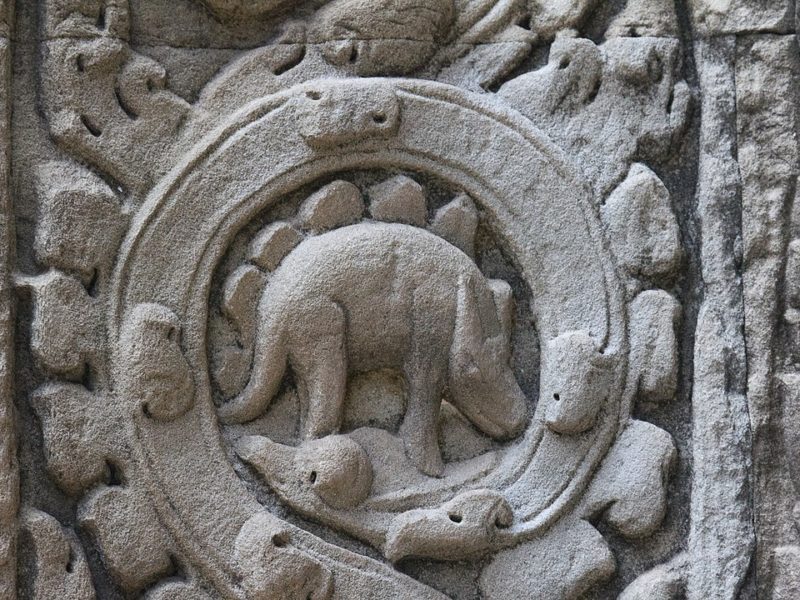




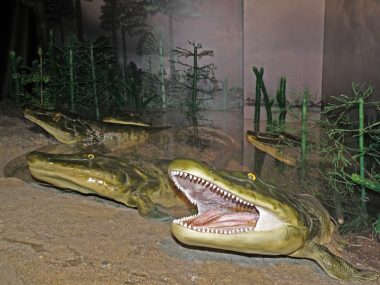





Its great to see criticism of the wrong ideas fellow creationists put out about dinosaurs living with mankind and recorded here and there.
first there wwre no dinosaurs. i say they are just types of creatures in spectrums of kinds. the kinds , after the fall, simply had these types and then at the flood all was rebooted and new types in the spectrums in the kinds are here now. So theropod dinos are just flightless ground birds and sauropods probably horses, camels, or extinct post flood creatures. Thats why before the flood those so called mammals did not exist in the fossil record and after the so called dinos did not exist. BECAUSE they are the same kind in different bodyplans.